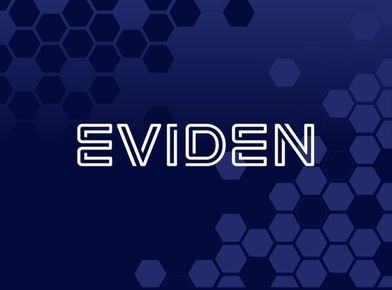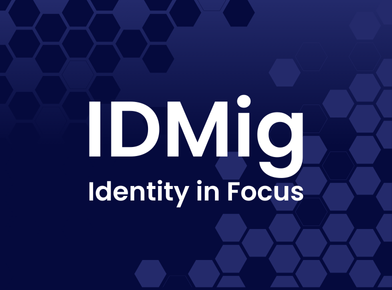Being a security leader in the modern digital world is more challenging than ever. Businesses face a never-ending barrage of increasingly sophisticated cyber-attacks across their expanding attack surfaces. And security leaders that aren’t taking action to protect their companies and employees will continue to suffer significant losses.
The consequences of suffering a breach are becoming increasingly financially damaging for organizations. For example, the average data breach cost last year was $4.35 million, which was a 12.7% increase on 2020, according to IBM’s Cost of a Data Breach 2022 report. IBM’s report found that stolen or compromised credentials were the most common cause of data breaches and took the longest to identify – averaging 327 days to be discovered by businesses. And credential-related attacks cost $150,000 more on average than other data breaches.
These costs are so high because a breach can have an indirect impact on corporate profits. For example, a breach can cause reputational damage that leads to customers taking their business elsewhere and result in significant fines, penalties, and ransomware payments.
So this Identity Management Day, on 11 April 2023, is an opportunity to assess your company’s security risks and limit the chances of successful data breaches.
What Is Identity Management?
The vast majority of data branches involve some form of human involvement. For example, 82% of breaches in 2022 involved a human element, such as human error, misuse of data or technology, or social attacks, according to Verizon’s 2022 Data Breach Investigations Report.
Identity management is the process of ensuring that only authorized users have access to the resources they need to perform their job role. Policies and technologies are deployed across the organization to ensure employees’ identities are properly authenticated, authorized, and identified before being granted access to software applications and systems.
As the name suggests, digital identities are critical to user access. Digital identities contain attributes and information that are unique to specific users and are used to deny or grant access to corporate resources and tools. Identities also change over time as users take on a new role or move to a new location. So identity management tracks changes to ensure a user’s access levels are up to date.
Identity management tools also ensure unauthorized access attempts are blocked, and alerts are raised whenever a suspicious or harmful threat is spotted. This ensures hardware resources, such as networks, servers, and storage devices, can’t be breached by unauthorized users and keeps sensitive corporate data secure.
What Are the Business Benefits of Identity Management?
Deploying an identity management approach is vital to protecting your business from the risk of identity-related attacks. It makes it more difficult for attackers to commit data theft, expose sensitive corporate information, and succeed with malicious cyber-attacks. These events can have a massive impact on your business’s bottom line, profits, and value, so the financial rewards of identity management are significant.
Identity management also helps employees work more efficiently and quickly. For example, it can speed up the time it takes to onboard new employees and get them set up on the tools and resources they need to do their job from days to minutes.
Automating identity management tools and processes is vital to freeing up IT teams to work on tasks that deliver tangible business benefits. It makes employees across the business more productive and reduces the time spent on non-essential tasks.
Why Identity Management Day?
Identity Management Day is a global day of awareness to inform businesses, employees, and internet users generally about the dangers of improperly managing digital identities. It aims to advise how to manage and secure digital identities by sharing best practices and encouraging organizations to implement better identity management.
A critical aim of Identity Management Day is to eradicate unsafe and unsecured user activities. That’s because employees are still carrying out actions that put your business at risk on a daily basis. Be it accessing email or business software on insecure personal devices, using unsecured WiFi networks for business purposes, or reusing passwords across work and personal accounts; these activities must be nipped in the bud once and for all.
The majority of serious data breaches that grabbed major headlines have all been the result of compromised user credentials. For example, the Colonial Pipeline and SolarWinds breaches both involved weak or compromised passwords, a lack of efficient security tools and protocols, and poor identity security practices.
Furthermore, 84% of organizations suffered an identity-related breach in the previous 12 months, according to our 2022 Trends in Security Digital Identities report. And 96% of those companies believed they could have minimized the damage had they implemented the right identity-based controls.
What Can I Do About Identity Management?
As a security leader, it’s your responsibility to address your enterprise’s identity security vulnerabilities and raise them to the Board level. Identity management programs have long lived in the operational shadows, but with the acceleration in digital transformation initiatives, identity has become critical to both enabling the business and reducing risk. Prioritizing identity within your security program and establishing it as the first line of cybersecurity defense, elevates the conversation.
From there, you can begin to foster a “BeIdentitySmart and BeCyberSmart” culture across the organization, encouraging your leaders, practitioners and employees to regularly speak about best practices and the importance of digital identity.
Consider launching internal awareness campaigns that share information about the perils of insecure digital practices via email or communication tools like Slack. Also, organize meetings or run training exercises to test employees’ knowledge and ensure they are fully aware of their cybersecurity risks.
You can take further action by applying the Identity Defined Security Framework, which gives organizations all the practical guidance they need to implement an identity-centric approach to security. The IDS Framework includes identity management best practices, identity-centric security outcomes, and techniques that can help you compile the processes, strategies, tools, and technologies required to reduce the risk of identity-related breaches. The framework also includes practical advice for implementing broad business initiatives, such as managing secure remote workforces or deploying a Zero Trust approach.
Take Action This Identity Management Day
Identity security is increasingly the responsibility of every employee across your organization. As a security leader, you need to lead the way by spreading awareness and ensuring employees are implementing best practices. But security practitioners and users also have an obligation to do everything possible to protect personal and corporate identities.
Join us this Identity Management Day to ensure your company is doing everything possible to BeIdentitySmart and BeCyberSmart.







